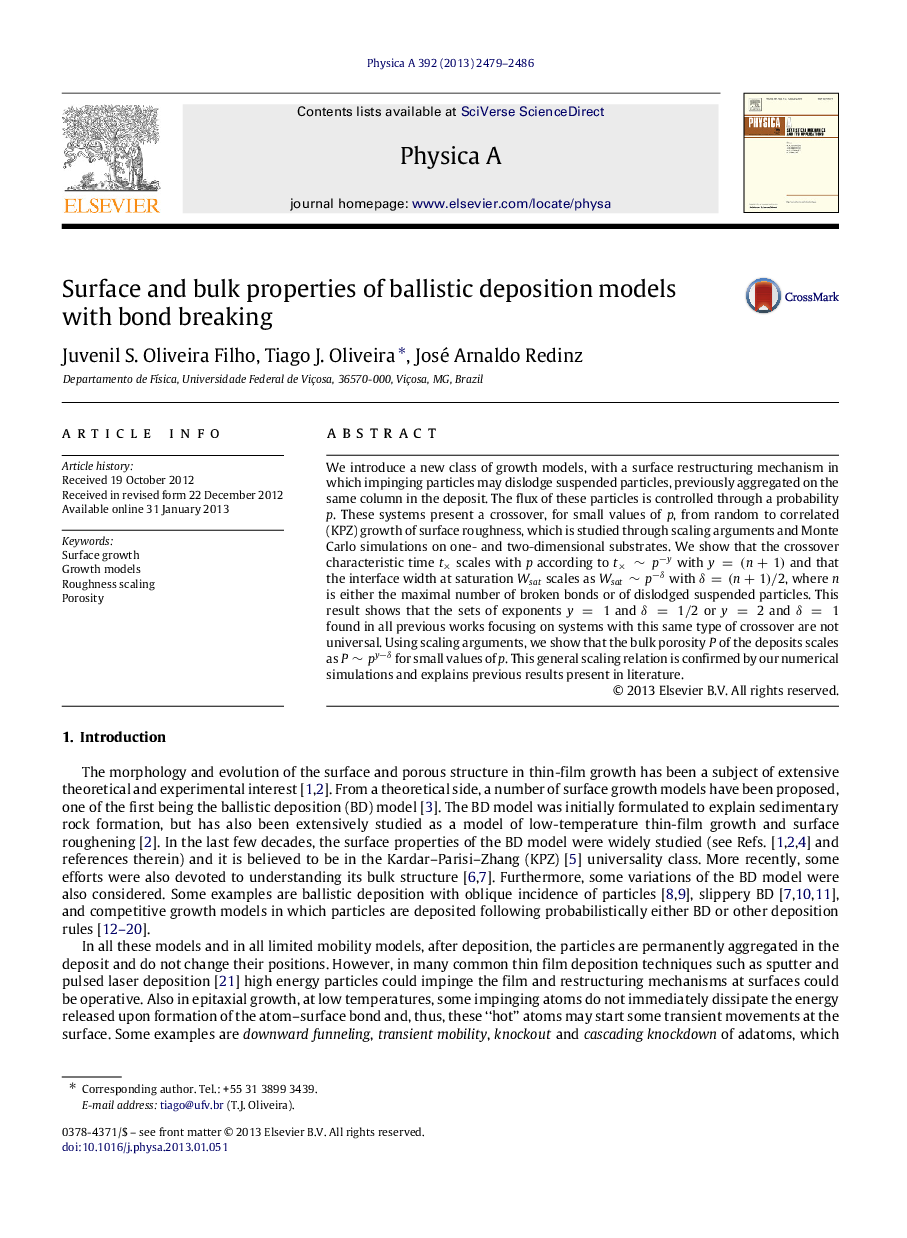| کد مقاله | کد نشریه | سال انتشار | مقاله انگلیسی | نسخه تمام متن |
|---|---|---|---|---|
| 975180 | 933019 | 2013 | 8 صفحه PDF | دانلود رایگان |

We introduce a new class of growth models, with a surface restructuring mechanism in which impinging particles may dislodge suspended particles, previously aggregated on the same column in the deposit. The flux of these particles is controlled through a probability pp. These systems present a crossover, for small values of pp, from random to correlated (KPZ) growth of surface roughness, which is studied through scaling arguments and Monte Carlo simulations on one- and two-dimensional substrates. We show that the crossover characteristic time t×t× scales with pp according to t×∼p−yt×∼p−y with y=(n+1)y=(n+1) and that the interface width at saturation WsatWsat scales as Wsat∼p−δWsat∼p−δ with δ=(n+1)/2δ=(n+1)/2, where nn is either the maximal number of broken bonds or of dislodged suspended particles. This result shows that the sets of exponents y=1y=1 and δ=1/2δ=1/2 or y=2y=2 and δ=1δ=1 found in all previous works focusing on systems with this same type of crossover are not universal. Using scaling arguments, we show that the bulk porosity PP of the deposits scales as P∼py−δP∼py−δ for small values of pp. This general scaling relation is confirmed by our numerical simulations and explains previous results present in literature.
► We study the crossover from random-to-correlated (KPZ) growth in competitive ballistic-like models with bond breaking.
► Our scaling theory is confirmed by numerical simulations in 1+11+1 and 2+12+1 dimensions.
► The crossover exponents found generalize the previous ones in literature.
► The porosity of the bulk are directly related to the surface exponents.
Journal: Physica A: Statistical Mechanics and its Applications - Volume 392, Issue 10, 15 May 2013, Pages 2479–2486